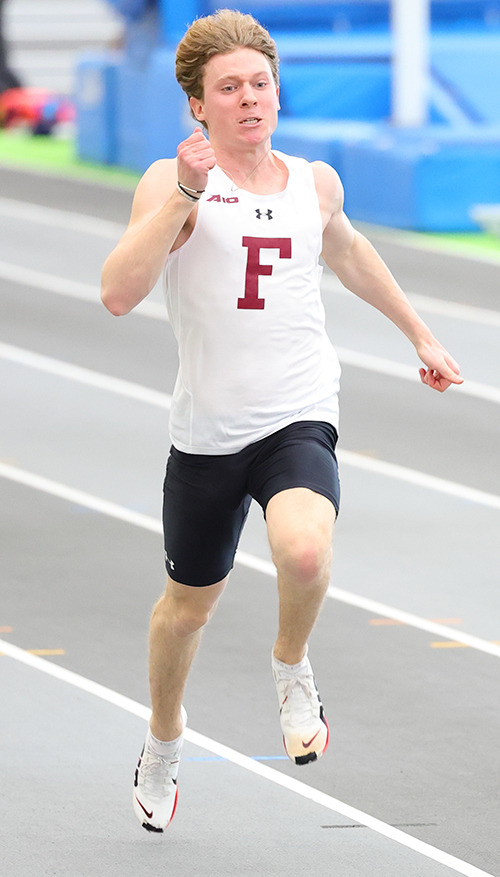A couple of years ago, I participated in an organized debate at my high school arguing that collegiate athletes should be allowed to profit off of their name and image. The debate occurred when any athletic-based profit outside of scholarships would cause athletes to lose National Collegiate Athletics Association (NCAA) eligibility. Just weeks after this debate, the NCAA lifted its decades-old ban on college athletes earning money for their name, image and likeness (NIL), and sponsorships for college athletics became an integral part of the college athlete experience.
In just a few years, NIL sponsorships have become widespread, with individual deals ranging from a few hundred dollars to hundreds of thousands, and top athletes and NCAA influencers reported earning millions annually solely from NIL deals. This unprecedented surge in earnings and the associated prestige from major brand collaborations marked the dawn of a new era in collegiate sports
Recently, NCAA president Charlie Baker unveiled an even more ambitious proposal, suggesting that college athletes should receive direct compensation for their contributions to their school’s athletics program. Under this proposal, top athletic programs could establish an “enhanced educational trust fund,” investing a minimum of $30,000 per year for at least half of their student-athletes. While not feasible for many smaller Division I schools, if approved, this proposal could pave the way for schools to gain more autonomy from the NCAA, with potential implications for NIL deals and logistical changes as well.
There are a number of benefits to directly compensating college athletes, a topic that has been hotly debated ever since the introduction of NIL sponsorships in 2021. For one, college athletics earn the NCAA billions — in 2019 alone, Division I athletics brought in $15.8 billion dollars to the NCAA enterprise (note that at the time, compensation for athletes could only come in the form of scholarships). With this proposal, schools would be able to properly compensate the athletes bringing in the most money. For schools such as the University of Alabama and the University of Georgia, with billions funding their football programs, $30,000 per athlete for at least half of their athletes is nothing but a drop in the bucket. By the end of his career, Alabama football coach Nick Saban made a salary of $11.1 million, close to the amount that it would cost Alabama to pay half of their 786 student athletes $30,000 annually.
Beyond financial considerations, providing direct compensation is justified by the immense dedication and physical toll that college athletes endure. They often face injuries such as broken limbs, concussions and muscle tears, with substantial time commitment for training and other athletic responsibilities. The popular notion of “student comes first in student-athlete” is frequently challenged, especially for athletes in top programs who allocate more time to sports than academics due to external pressures.
Though supported by many, Baker’s proposal has faced immense criticism. One common argument is that because these athletes are not professionals, they should not be treated or compensated as such. They are being compensated for their athletic contributions to the school with scholarship money that grants them a degree which can be used later in life. According to this argument, athletes are at school to receive an education, and athletics are a way of earning this education. To pay college athletes would be accepting that they are, essentially, no longer students — they are employees of the school.
Logistically, there are also some issues that would have to be addressed with the proposal. For one thing, the proposal would force a strict divide between big-money athletic programs and smaller D1 programs. The proposal specifies that schools who choose to pay their athletes would have to invest at least $30,000 per year for at least half of their athletes — for a big school like Alabama, Georgia or the University of Texas, this may be viable, but for a smaller school with less of a focus on athletics, this makes the proposal impractical and, quite frankly, out of the question. Because only a small percentage of Division I programs have the resources to adopt this proposal, it would create a stark divide between smaller schools and larger schools in terms of who could pay athletes and would lead to fewer talented high school athletes choosing small schools over larger, better-funded programs.
Even among top athletics programs, the proposal would create competition, both between athletes and between schools. Schools would not be required to pay all of their student-athletes, which could cause tension between teammates or between coaches and athletes. Salaries, which would undoubtedly be based on both performance and perceived value to the school, would be highly disputed, and unsatisfied athletes would be inclined to transfer to other schools in hopes of better salaries. With this in mind, schools would be in direct competition, as top recruits would be seeking whichever school pays them the highest salary. Because money is distributed so unevenly among athletics programs, some schools would automatically be able to offer recruits significantly higher salaries, giving them an advantage that would only grow as they obtain and retain top talent.
Despite its potential impact, the proposal is unlikely to affect Fordham’s athletics program. Given the school’s expenses, salaries would probably be offered only to athletes whose contributions surpass the value of a full athletic scholarship. While this proposal may primarily benefit top programs, it offers unprecedented opportunities for NCAA stars like Bronny James, Paige Bueckers and Spencer Rattler to be directly compensated for their significant contributions to their schools.





































































































































































































